|
In the world of slo-pitch
softball, in the late 1970's to early 1980's, there was the McCarthys softball
team which played at Heilman field in Detroit, Michigan. This was a team
masterminded by Larry McCarty (who obviously did not write legibly), and
consisted of several
of his Pic-Way employees, a couple friends, and several of the McCarty
brothers. On the opening day roster, and for the next several seasons were Rick, Dan, Larry, Kelly & Jerry McCarty.
With 5 McCartys on the same bench, the team competed, but never won the big trophy (but did have
fireworks and just made lemonade after every game).
After the 1983 season, the team disbanded, and Rick and Kelly left to play at
a new complex near Mt. Clemens called Barrymores. They joined a team managed
by John Russo, primarily made up of JCPenney employees, and sponsored by Tom's
Landscaping. The two power hitting brothers joined a talent laden team, and helped them to win back-to-back championships in
1984 and 1985. The team competed every year after that until disbanding in 1989. After that, no McCarty's teamed
up again... that is... except for one special day in 1990.
With Rick playing in a Detroit league, and Kelly moving to play in Sterling Heights, youngest brother Steve started his own team back at Barrymore's call LCRR.
Kelly joined Steve and the rest of LCRR during the season after their pitcher
broke his leg. The very young team (mostly about 21 years old) started the
season slow, but gain some momentum as the season progressed. All was good,
until several players had to pull out of the July 7, 1990 game because of the
holiday weekend. Instead of just throwing in the towel, on that special day,
stepping in to help were 7 (yes, count them, 7) McCartys in the starting lineup. Steve, Jerry, Kelly, Larry, Danny, Rick, and father Bob McCarty all stepped in to avoid a forfeit, and put together a day which will be rememember always.
Every member of the family had at least 1 hit, and the Mc's helped LCRR to an 11-9 victory. This would be Dad's final competitive game continuing a streak of playing in 6
consecutive decades (40's, 50's, 60's, 70's, 80's, 90's), as he passed away the following June 1.
|

|
DO YOU REMEMBER - THE
VERTIBIRD HELICOPTOR?
One of the best toys of all time
was one that my brother Jerry got for Christmas. The VertiBird Helicopter. It
flew around a central base containing an electric motor, spring lift assist, pitch control, batteries, and a throttle. A 21-inch arm with pitch control rod and the spindle that transfers the power to helicopter via drive springs and drive rod, is connected from the central base to the helicopter.
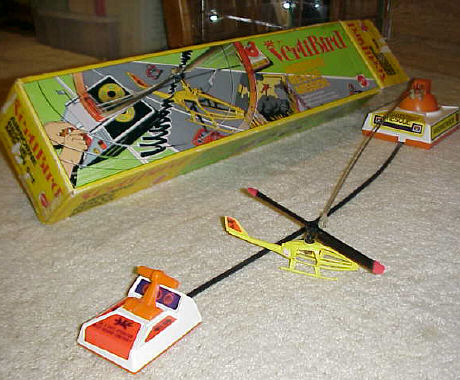 |
The original VertiBird playset
from the 1970s had a space theme reminiscent of the Project Mercury program.
The helicopter was controlled using a two lever control unit. The controls operate similar to a real helicopter. The throttle control provides proportional control of the blade speed. The pitch control provides for tilting the Vertibird forward or backward.
During flight the VertiBird is subject to the same physical flight characteristics as a real helicopter. This included ground-effects for low level hovering, plus altitude gains and losses when changing direction. Overall the VertiBird is easy to learn how to pilot for basic flight, but precision flying will require some patience and time on the controls as in a real helicopter. |
As noted there was a spring assist to lift the VertiBird. However, in actual operation the assist is not enough to lift the VertiBird off the ground. Most of the lift comes the spinning rotor itself. Subsequently, dropping heavy items during flight will result in a very rapid ascension of the VertiBird unless the pilot has good flight skills.
Mattel designed the set with the young flyer in mind. The VertiBird can take quite a beating during crashes and toybox storage. This design has resulted in a toy that has survived over
40 years and remains as fun today as it was when VertiBird first came on the market back in 1971. The average retail price for most VertiBird's back during the 1970s was between $8 - $20.
METRO BLAST -
JUNE, 1947
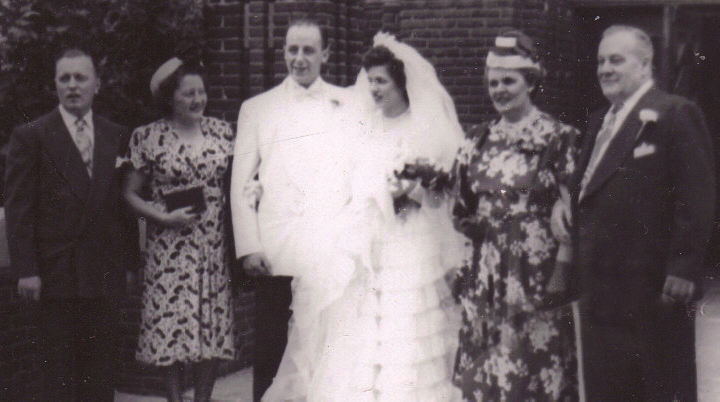
Wedding Bells Rang 65 Years
Ago For Bob & Jean McCarty
The Happy Couple Pose With Bud & Marge Dohring and Emma & Arthur
Schmelzer
| A
METRO PHOTO BLAST |
NAME OUR CARTOON CHARACTER
|
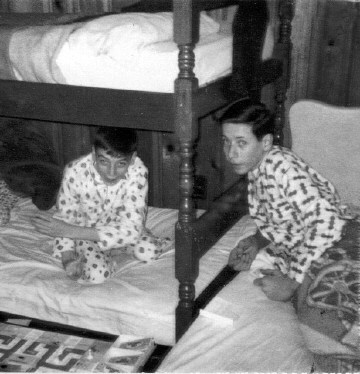
|
|
Snazzy PJs Guys - Larry & Rick - 1965 |
|
. |
|

GUESS THE
YEAR OF THESE SONGS
|
| . |
|
I Am A Rock
- Simon & Garfunkel
Wipe Out - The Surfaris
Just Like Me - Paul Revere & The Raiders
Cherry, Cherry - Neil Diamond
I Fought The Law - Bobby Fuller Four |
|
|
|
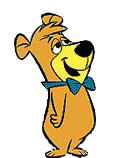
|
NAME
THIS CHARACTER
|
|
LAST
MONTH'S ANSWER
HENRY
.
Congratulations: Margaret M, Mike M, John D, Mikey G
|
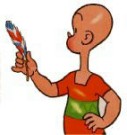
|
|
Henry is a comic strip created in 1932 by
67 year old Carl Anderson. Henry is a young bald boy who is mute (and sometimes drawn minus a mouth). With the exception of
early episodes, he communicates only through
pantomime. The Saturday Evening Post was the first publication to feature Henry,
on March 19, 1932 and ran for 2 years until replaced
by Little Lulu. Anderson's assistant on the Sunday strip was Don Trachte. His assistant on the dailies was John Liney. In 1942, arthritis kept Anderson away from
drawing, so he turned the dailies over to Liney, and Trachte drew the Sunday strips. When Liney retired in 1979, the strip appeared on Sundays only until Trachte's death in 2005. During that period, Jack Tippit and Dick Hodgins, Jr. also contributed. About 75 newspapers still run classic Henry strips.
|
|
|
|